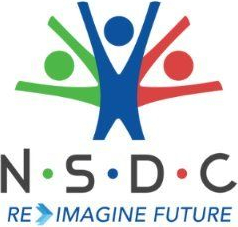AI Pragmatism Overtakes Overblown Claims

A new wave of skepticism is challenging the relentless hype around artificial intelligence, as business leaders and researchers question its real-world value.
Recent surveys reveal that over half of executives regret replacing employees with AI, citing lost expertise and unclear benefits. Experts warn that the promise of AI may be outpacing reality, urging a more measured approach to adoption and investment.
- Skepticism about AI’s overblown claims is growing—with leading voices and new research highlighting exaggerated promises, persistent biases, and the gap between theoretical potential and practical value.
- Over 55% of C-suite leaders regret AI-driven layoffs, as organizations realize that letting go of skilled employees risks losing irreplaceable knowledge and undermines long-term performance.
- Despite the hype, most companies are still far from AI maturity and now prioritize reskilling their workforce, recognizing that human judgment, adaptability, and context remain essential for successful AI integration
There is a growing body of research papers, books, article, and CEO pronouncements that unmistakably point towards a growing skepticism about the Artificial Intelligence (AI) hype that was sweeping across the world. While every new LLM (Large Language Model) launch was being heralded as a breakthrough that carried the potential to destroy millions of jobs, CEOs like Microsoft’s Satya Nadella were raising powerful questions about the need for AI to deliver tangible value to justify its insatiable demand for energy to power its colossal data centers. Nobel laureate economists like Daron Acemoglu, estimates the annual productivity gain due to AI at roughly 0.05% for the next 10 years. A latest book ‘The AI Con’ pierces through the hype to throw some powerful questions about the tsunami of techno-optimism around AI.
Emily M. Bender, a linguistics professor at the University of Washington, and co-author of ‘The AI Con’ argues in a podcast that AI is marketed as more capable than it truly is—portrayed as advanced “artificial intelligence” rather than just tools for specific tasks like transcription or sound adjustment. In her book and podcast, Bender and co-author Alex Hanna critique AI marketing for exaggerating benefits while downplaying costs. They emphasize that the primary beneficiaries are companies selling AI software or using it to justify downgrading human workers’ roles.
Nevertheless, organizations have eagerly lapped up the over promise of AI and fired thousands of employees across the world, to replace human capital with AI, cut costs and win accolades from shareholders for bloated market capitalization and improved quarterly results. But, some of them are regretting this undue haste in replacing workforce with AI.
Early research suggests this knee-jerk strategy may backfire. A survey of 1,000 C-suite and senior decision-makers by Orgvue found that 55% of respondents regret making employees redundant when implementing AI. By letting go of skilled employees with valuable institutional knowledge, companies risk losing irreplaceable human experience and expertise.
The survey also revealed that 25% of business leaders are unsure which roles will benefit most from AI, and 30% didn’t clearly understand which roles were at risk from automation. This lack of clarity highlights the importance of human judgment and adaptability in navigating AI-driven change.
As companies learn from their mistakes, 80% now plan to reskill employees to use AI effectively, with 41% increasing learning and development budgets. This shift towards investing in human capital is crucial, as “technology may evolve rapidly, but it is people who bring context, judgment, empathy, and direction,” according to Daden from Criteria.
It is apparent that AI is following the Garner Hype Cycle trajectory that typically starts with begins with the Technology Trigger phase, marked by widespread excitement about a technology’s potential. This peaks at the Peak of Inflated Expectations, where hype surpasses reality, followed by the Trough of Disillusionment as progress stalls. Recovery emerges on the Slope of Enlightenment with practical applications, culminating in the Plateau of Productivity where the technology becomes mainstream. Right now it seems to be somewhere between inflated expectations and the beginning of a trough of disillusionment.
For any technology to become mainstream three things must come together – technology reliability level must reach closer to 10, on a scale of 1-10, it must become affordable for large scale adoption and scaling up, and finally the theoretical use cases must mature into practical case studies. While GenAI tools have wowed the users with their capabilities of writing content, creating movies, music, and AI-powered fraud detecting in fintech, predictive maintenance in manufacturing, applications in diagnostics, and supply chain optimization has delivered real benefits, AGI (artificial general intelligence), the idea that machines can think and learn like humans, is still far away. The hype around AI solving big societal problems quickly has met push back. Issues like algorithmic bias, privacy concerns, and ethical dilemmas have led to a more cautious approach toward implementation in sensitive areas, like hiring practices, criminal justice, and surveillance.
A third of global technology leaders believe their board has unrealistic expectations or demands on how new technologies like AI will impact business performance. This is according to an IDC InfoBrief, commissioned by Expereo, which highlights serious roadblocks to global AI implementation, despite AI being considered critical to fulfilling business priorities.
This research indicates is also optimistic about AI’s significant promise for businesses, if following key challenges could be overcome:
– 52% report inadequate network infrastructure for AI initiatives, – while 45% cite network performance limitations (up from 38% in 2024). Implementation barriers include AI governance/ethics concerns (42%), employee resistance (35%), rapid technological change (34%), and external partners’ capability gaps (29%). Despite these hurdles, 79% of technology leaders note heightened board-level attention to AI—a sharp rise from 60% in 2024.


